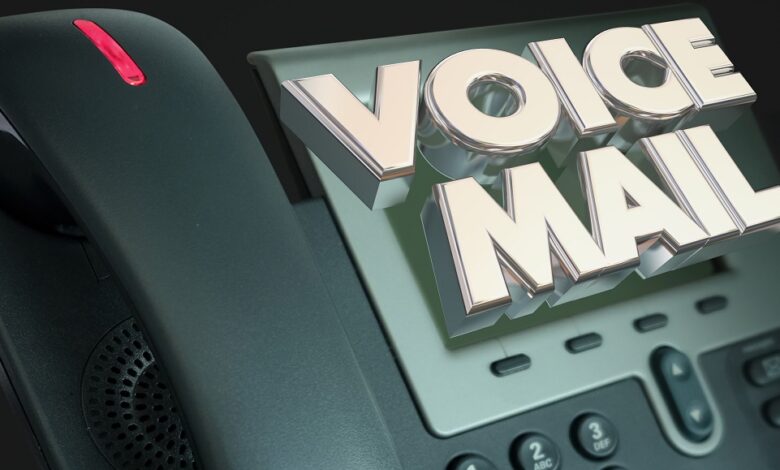10 Business Voicemail Tips To Get That Callback

In today’s digital age, there’s no denying that many business communications are first made over the phone before both parties even get to meet face-to-face. It’s also safe to say that a significant first impression about your business can already be deduced even with something as simple as your voicemail. Because of the pressing effect it has on your business, you have to do all that you can to keep your record good and positive. Otherwise, an ill-made and rushed voicemail could result in a low rate of returned calls.
It’s a worthwhile endeavor to put in a lot of effort in ensuring you have the best voicemail greetings, which are representative of the professional business that you are. This article gives you a comprehensive guide on business voicemail and the necessary tips that can effectively help you get that callback.
1. Check Your Voicemails Frequently
Your goal for improving your business voicemail messages is to have more callers ring back or return your calls, so it follows that you also have to check your own voicemails frequently. It’s not just enough for you to be the one to ring and send voicemail messages. When would-be customers are convinced about your products and services to the point that they’ve returned your calls, you now have to take your customer service to the next step.
By this, it means promptly addressing those return calls. If you don’t, then those calls merely stay stale or stagnant. Remember that until you’ve addressed your customer’s return calls, those aren’t conversions yet. You have to be more proactive with your processes for you to consider those clients as successfully converted ones.
You can be certain that you’ve answered the return calls from your customers by having a fixed schedule every day that’s dedicated to checking your own record of return calls. If you can have a team for this purpose, then have one. The prompt feedback you can give those prospective clients after they’ve returned your call may successfully translate to better sales and higher profitability.
This is also where your automated call software such as Drop Cowboy and others comes in handy. If you don’t have one already, it’s worth investing in moving forward. With your call software, there’s an effective flow of outbound and inbound calls. This means you have a record, too, of all the return calls you’ve gotten in the order of priority they’re made. This doesn’t just create a smoother system for your calls, but it also ensures no return call is ever left ignored.
2. Understand The Basics Of What A Voicemail Greeting Is
Before delving into the specifics on improving voicemail greetings, it’s important to go back to basics. This means creating that strong foundation in your mind and in your entire team as to what a voicemail greeting is, so you’re certain that all the strategies you apply are well-suited to the definition of a voicemail greeting.
In a nutshell, a good voicemail greeting should only be brief but also complete, simple but also professional. It should only meet its purpose of leaving a quick message to the listener or informing a caller that although you haven’t taken the call, you’re going to get back to it at the soonest time available.
As you work on keeping your voicemail brief and professional, it should also be personalized and tailored in such a way that it meets your industry’s standards. Otherwise, no matter how professional you may sound, a mismatch in the tone and message will still render your business voicemail ineffective.
If your business is more on the casual and relaxed niche, then your tone, although professional, should also be casual. If your business is highly technical and formal, then that’s when it also becomes right to inject a hint of formality.
As to the basics, your voicemail greeting should always have the following information:
- A quick greeting;
- A call to action such as ‘send me an email at…’ or ‘leave a message…’;
- Your name and the department you belong to;
- Any alternative mode of communication if available;
- Your company name.
3. Think Every Message Through
Before even making that phone call and leaving a business voicemail, you need to take the time to think every message through. Take notes or have a sheet of paper containing all the information you need to say. Especially if you’ve recently changed your offers or if this is your first time to leave voicemail messages, thinking your message through ensures that you exude confidence and professionalism upon making the call.
The last thing you want your potential clients to hear is stuttering simply because you weren’t able to prepare well enough for your message.
4. Announce Yourself
Announcing yourself means that before you go right into your offers and expounding on it or whatever your business voicemail is going to be about, you’ve already made yourself known. This means always starting with your personal name and your business name. Your company’s representatives should never miss out on the fact that they’re calling on behalf of your business. Otherwise, your target listeners won’t even keep you on the line when they aren’t confident about your identity.
Remember that your goal is to have a higher rate of returned calls. To be able to successfully meet that standard, you need to earn the trust of the individuals you’re calling.
5. Speak Slowly
Going hand in hand with preparing and thinking your message thoroughly before calling, there’s now the need for you to speak slowly. This doesn’t mean talking very slow as if you’re talking to a child to get your message across. Rather, it simply means enunciating every word carefully and practicing the right spacing, so your listener is able to understand you.
Put yourself in your listener’s shoes. Have you ever tried listening to someone on the phone who’s just talking so fast? Apart from not understanding what they have to say, you could also be tempted to just cut the call and drop it. Or, it becomes an inconvenience to your listeners for them to have to rewind your message frequently just to understand the message.
Speaking slowly also gives the listener on the line the opportunity to write down your message. Remember that people write slower than they talk. If you don’t speak clearly and slowly enough, your target listeners won’t be able to catch up, or they may even write the wrong information, making your message ineffective.
6. Smile While Speaking
Even if you’re not actually conversing with the listener face to face, it helps to smile while you’re talking. Doing so can help set the right tone, mood, feel, and intonation such that throughout the call, you remain friendly and engaging. It may seem quite odd to do so, but if you test it out, you’ll hear the difference yourself.
Your listeners may not be able to see your happy and friendly face, but they’ll hear the cheeriness in your voice. This makes a significant impact in creating rapport with your listeners. Sounding professional in your business voicemails should never be at the expense of being friendly. After all, no one would ever want to listen to someone on the phone who sounds rushed or is dry and grumpy.
7. End Your Call Professionally
As you give your business voicemail a strong start by sounding like a professional, the same demeanor and tone in your voice should be maintained even as you end your call. This is very important to highlight as there might be some of you who could be irritated towards the end of your call, particularly if the call wasn’t successful.
No matter how the call went, always sound professional, friendly, and polite. You don’t have to repeat your message one last time as that’s only wasting precious call time you could’ve spent calling others on your list. Your listener can always replay your message if they want to hear it one more time. End it with a friendly line like, ‘I’m looking forward to hearing from you soon,’ or ‘have a nice day.’
8. Cancel Out Any Background Noise
No matter how clearly you pronounce your words or do proper phrasing, your message quality will still be affected if you aren’t able to cancel out any background noise. Before recording your business voicemail messages, you have to be certain that you’ve nixed any noise that may interfere with your call’s clarity.
Your voicemail may be able to pick up even the slightest noise in the surrounding. So, if you can wait until it’s quiet to record your voicemail messages, then you should. If you’re working in an office where there are many people in the same room as you are, at least give them the notification that you’re recording a voicemail message, so everyone in the room is aware of the need to be quiet.
9. Practice Makes Perfect
Practice makes perfect, and the same applies to reading and making your business voicemail calls. Before making those calls, give the call agents or representatives of your company time to rehearse. Let them go through the script a lot, so they’re familiar with the words. With enough time to practice, your call representatives can also make their own notes on the scripts to be guided and to avoid any monotony.
While it’s not necessary to memorize the script, it’s an added advantage when your call representatives have practiced reading it over and over again. By doing so, the flow of the script is clear to them. This familiarity can avoid confusion or dead airs during the call when your callers may be confused as to what the next word may be, for instance.
Practicing regularly also means taking tips from other call agents who’ve been making the business voicemail calls for a longer time than you may have been doing. There’s always time to learn from each other. And as you do, you can undo any possible mistakes and improve on those facets of making business voicemail calls which need improvement.
In today’s day and age where almost every resource can be found online, that’s even all the more reason to convince you why practicing is important. It can be as easy as searching for examples on YouTube and learning the tricks of the trade from no less than the professionals themselves.
10. Preview Your Voicemail Recording
After practicing so many times to get your business voicemail messages done accurately, perhaps now you have more confidence to record them. Once that confidence is there, go ahead and record your voicemail message. But before sending it to everyone on your contacts list, you also want to have a preview first. This means taking the time to listen to the recording to be sure it’s perfect.
You can think of this process as the editing step before publishing an article. It’s an extra step to fine-tune the piece such that you’re a hundred percent sure about the grammar, tone, and even the accuracy and availability of all the necessary information. As a rule of thumb, don’t use any voicemail that you think is subpar.
Conclusion
No matter how hard you try to have all of your calls answered each time the phone rings, such an ideal situation may not happen all the time. There are some days in business that are busier than others, and the calls will be left on the line. Hence, you can also use your voicemail for reaching out to clients and marketing activities like cold calling.
Whatever your purpose for calling, the most important thing you have to remember is you shouldn’t take for granted the quality of your business voicemail. When you spend time and effort to get it right, you’ll want your voicemail to deliver the best results. The tips above should give you enough insights to learn more about business voicemails and what you can do to continue to improve. Consider the ideas mentioned here as you plan and prepare.




